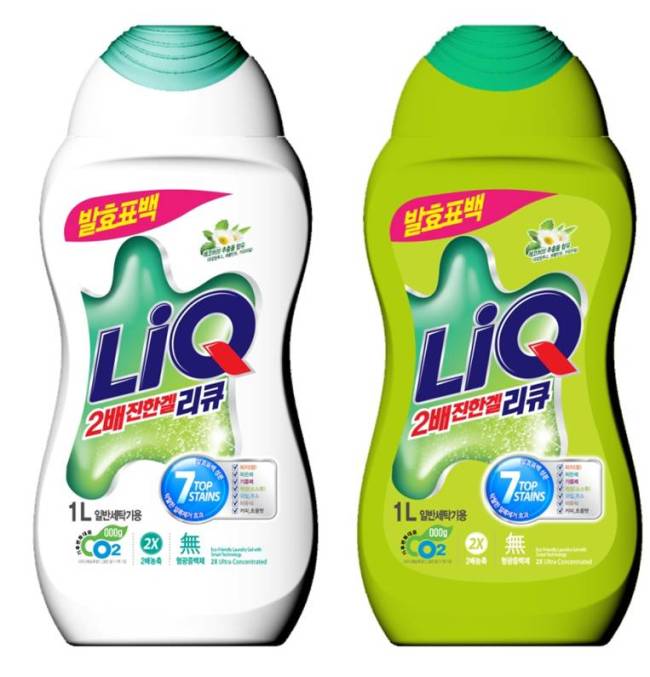Sustainable packaging design for better life
Made of recyclable, safe materials that can be repurposed, packages are no longer a waste
By Lee Woo-youngPublished : Aug. 29, 2013 - 20:08
This is the third installment in an eight-part series that examines the social role of design beyond its aesthetic aspect. The weekly series is a precursor to Herald Design Week 2013 from Oct. 7-11, which will be organized under the theme of “Re-imagine the World.” ― Ed.
Sustainability has been a keyword in the world of design for nearly a decade and packaging design has been no exception in this effort.
The packaging industry moved from the conventional idea of the role of packages as a sales booster, to a new perspective that considers the whole cycle of a product from the source of raw materials to its end of life.
 “There are two ways to achieve sustainability in packaging design. One is not using toxic, unsafe materials in production and the other way is to make packages reusable,” said Shim Jin-kie, director of the Korea Packaging Center.
“There are two ways to achieve sustainability in packaging design. One is not using toxic, unsafe materials in production and the other way is to make packages reusable,” said Shim Jin-kie, director of the Korea Packaging Center.
The sports brand Puma is a leader in such efforts. The company has set strategies to reduce the amount of waste and carbon dioxide emissions by changing their traditional packaging designs for shoeboxes and polyethylene bags with the goal to cut carbon, energy, water and waste by 25 percent by 2015.
The initial effort started in 2010 with the launch of a substitute for the traditional shoebox. Instead of paper boxes, the company uses a bag to carry shoes that can be repurposed for grocery shopping or as an everyday bag.
Sustainability has been a keyword in the world of design for nearly a decade and packaging design has been no exception in this effort.
The packaging industry moved from the conventional idea of the role of packages as a sales booster, to a new perspective that considers the whole cycle of a product from the source of raw materials to its end of life.
 “There are two ways to achieve sustainability in packaging design. One is not using toxic, unsafe materials in production and the other way is to make packages reusable,” said Shim Jin-kie, director of the Korea Packaging Center.
“There are two ways to achieve sustainability in packaging design. One is not using toxic, unsafe materials in production and the other way is to make packages reusable,” said Shim Jin-kie, director of the Korea Packaging Center. The sports brand Puma is a leader in such efforts. The company has set strategies to reduce the amount of waste and carbon dioxide emissions by changing their traditional packaging designs for shoeboxes and polyethylene bags with the goal to cut carbon, energy, water and waste by 25 percent by 2015.
The initial effort started in 2010 with the launch of a substitute for the traditional shoebox. Instead of paper boxes, the company uses a bag to carry shoes that can be repurposed for grocery shopping or as an everyday bag.

The Clever Little Bag has had a big environmental impact as it has contributes to saving paper and water by 60 percent since its introduction, according to the company.
Earlier this year, the sports company unveiled sneakers made of biodegradable materials such as organic cotton and linen.
“The period of biodegradation depends on air, water, soil. So we can’t tell the exact period that it takes until the completion of degradation,” said an official of Puma Korea.
As the sneakers decompose, they leave just the shoelaces and cotton used to wrap the exterior. They slowly turn to dust, leaving no trace of the materials.
Saving energy seems a challenge in doing laundry, which is one of the largest users of energy at home.

But the Korean consumer goods company Aekyung found a solution for the energy waste in liquid detergent and its packaging.
Consumers were able to use less detergent as they can pump the right amount into the bottle cap and leave it inside during the wash cycle, which also prevents clothes from getting tangled inside the washer.
“It saves energy that is required for packaging, shipping and minimizes waste because just half of what used to be required is needed for a wash,” said an official of Aekyung.
Some other innovative examples in packaging design are taking place in the food industry as more companies make packages that can be reused after the content is consumed.
CJ Cheil Jedang developed an airtight container for hot pepper paste that allows the consumers open and close it easily and later use it as a food container, using silicon that closes the container tight.
Sajo Industries introduced a safe opener for its tuna cans. The “relief opener” features a thin sheet of foil instead of a hard, small ringpull that sometimes breaks when pulled it too hard.
Some packages keep the food inside fresh. Bean sprouts, which don’t normally last three days before going brown, now can stay fresh for more than a week thanks to the air-permeable package that controls air flow for an extended period.
New kimchi packaging is now being developed that can absorb carbon dioxide to preserve the fermented cabbage for longer.
“The industry is moving towards sustainability: they use fewer natural resources while producing more appealing and convenient designs,” said Shim.
By Lee Woo-young (wylee@heraldcorp.com)











![[Hello India] Hyundai Motor vows to boost 'clean mobility' in India](http://res.heraldm.com/phpwas/restmb_idxmake.php?idx=644&simg=/content/image/2024/04/25/20240425050672_0.jpg&u=)







